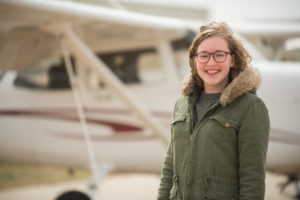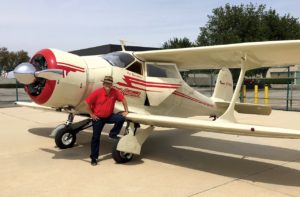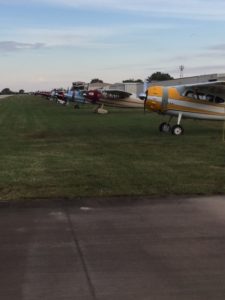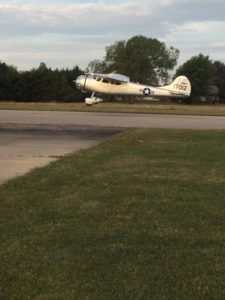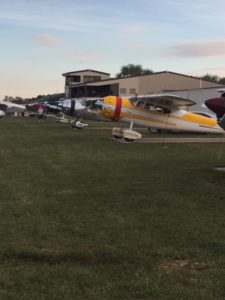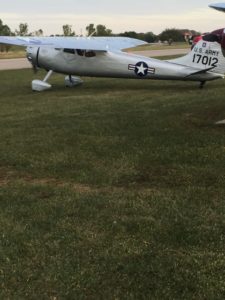Blog
November 3, 2018
EAA’s CEO will receive award at January 26 Gala in Wichita Jack Pelton was actually the creator of the Wichita Aero Club (WAC) which will honor him with the presentation of its annual Wichita Aero Club Trophy at a gala in Wichita on January 26, 2019. During the summer of 2008, he was a guest speaker at the Atlanta Aero Club. Upon returning to Wichita, where he served as CEO of Cessna Aircraft Company at the time, he wondered aloud why the “Air Capital of the World” didn’t hav e its own aero club? His query prompted local aviation leaders to pursue the idea, and Pelton enthusiastically helped secure financial backing, leading to the announcement of the WAC at the 2008 National Business Aviation Association (NBAA) Annual Meeting & Convention several months later. It only seems fitting that the man who provided the impetus for the founding of the organization should be honored on its 10th anniversary.
Mr. Pelton, the Chief Executive Officer of the Experimental Aircraft Association (EAA), is also a DIrector of DOC’s FRIENDS, the 501c3 nonprofit board managing the operation of the Boeing B-29 Superfortress known as DOC. He was named EAA’s President and CEO in November 2015, formally adding those responsibilities to the Chairman of the Board role to which he was first elected in October 2012.
“Jack Pelton is tremendously deserving of the WAC Trophy and he also warrants special recognition for his work on behalf of the B-29 DOC Restoration effort, as well,” said Dave Franson, president of the Wichita Aero Club. “If it has anything to do with aviation and education, you can bet Jack will be involved and supportive. He’s a walking encyclopedia of the industry and an enthusiastic owner and operator of aircraft. As the son of pilot/parents, he’s been immersed in this industry since he was a kid. We’re extremely pleased to honor him in this way,” Franson added.
The citation which accompanied Pelton’s nomination reads:
Jack Pelton’s contributions and impact on both the Wichita community and the aviation industry are legendary. His lifelong dedication, leadership and influence on legislation, regulation and taxation continue to shape our industry and will do so for future generations.
Mr. Pelton was the first elected Chairman from outside EAA’s founding Poberezny family. In his role as Chairman/CEO, Pelton leads the organization’s board and staff in its mission of growing participation in aviation and inspiring people to fly, build, and further engage in flight.
He is a lifelong, passionate aviation enthusiast, following in the footsteps of his parents. He built his first airplane with his father as members of EAA Chapter 1 (Riverside, Calif.) in the 1970s. Pelton is an EAA Lifetime Member who has also been devoted to restoring and flying vintage aircraft, even as he reached the highest levels within the aviation industry over the past three decades. He currently holds airline transport and commercial pilot certificates, and has earned instrument, multi-engine and seaplane ratings, plus type ratings for the Cessna Citation and Cessna Mustang jets.
Jack is the retired chairman, president, and chief executive officer of Cessna Aircraft Company, headquartered in Wichita. In his decade with Cessna, beginning as senior vice president of product engineering, he oversaw new aircraft development, testing, certification, and improvements for all Cessna models.
Prior to joining Cessna, Pelton was senior vice president of engineering for Dornier Aircraft in Germany. He began his career with Douglas Aircraft in Long Beach, California, where he rose within the company in operations, engineering, and program management.
Pelton’s knowledge and experience has also been a valuable asset throughout the aviation community. He is past chairman of the General Aviation Manufacturers Association board, and has served on the boards of the Smithsonian National Air and Space Museum, the National Business Aviation Association, and the Corporate Angel Network. In addition to his role on DOC’s FRIENDS’ board, he is also involved with numerous local organizations in the Wichita area where he and his wife, Rose, make their home. Pelton has also served as volunteer chairman of EAA’s Gathering of Eagles, the annual fundraiser held during EAA AirVenture Oshkosh that has raised millions of dollars to inspire youth in pursuit of aviation dreams.
Mr. Pelton has received numerous awards through his career. In 2017, he received the National Aeronautic Association’s Distinguished Statesman of Aviation Award, the FAA’s Friend of Safety Award, and induction into the Kansas Aviation Hall of Fame. His other honors include the 2010 Lindbergh Award for balancing technology and nature, the 2008 Aviation Week Laurel for Business and General Aviation, and EAA’s highest honor, the Freedom of Flight Award.
About the WAC Trophy
Previous winners of the Wichita Aero Club Trophy are:
- Velma Wallace 2011
- Jeff Turner, Spirit AeroSystems 2012
- John O’Leary, Airbus Americas 2013
- Russell W. Meyer, Jr. 2014
- Al Higdon, 2015
- DOC’s Friends Volunteers, 2016
- Paul Bowen, 2017
- Lynn Nichols, 2018
Read all about the previous recipients here. >
Established in 2008 to foster and promote interest in aviation and provide a forum focused on the industry’s issues and achievements, the Wichita Aero Club brings those with a passion for flight together in an environment that expands and enhances professional relationships and furthers cooperation and understanding.
The WAC Trophy is awarded annually to a living person, group or existing organization with a strong relationship to the greater Wichita area who have distinguished themselves in the field of aviation or aerospace within the most recent calendar year or during a cumulative career of significant achievement and contribution. For more information on the Wichita Aero Club, the January Gala or other Wichita Aero Club events, call 316-665-2699 or visit the Wichita Aero Club website at www.wichitaaeroclub.org.
October 12, 2018
Bruce spent virtually his entire career, which spanned over 60 years, with one company—FlightSafety, International. He used to joke that he had only one promotion during that tenure, and it took 43 years to get it! That’s because he became the “right hand man” to the firm’s founder, Al Ueltschi, very early in his tenure and only moved up after Mr. Ueltschi passed away in 2003. It’s tough to get promoted when you’re #2 to the company’s founder, who worked until he was 96. There just aren’t a lot of jobs to choose from in that situation!
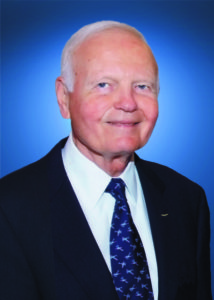 Bruce Whitman spent his life minding his “P’s and Q’s.” He was Precocious, Persistent, Patriotic, Powerful…and Polite. No one in business aviation was ever nicer, more deferential or sensitive to the people with whom he worked than Bruce. He treated us all the same—extremely well. The number of people who can rightly call him their “friend” is legion, and he really did care about all of us. If you look up “gentleman” in the dictionary his picture may not be there, but the definition is his biography!
Bruce Whitman spent his life minding his “P’s and Q’s.” He was Precocious, Persistent, Patriotic, Powerful…and Polite. No one in business aviation was ever nicer, more deferential or sensitive to the people with whom he worked than Bruce. He treated us all the same—extremely well. The number of people who can rightly call him their “friend” is legion, and he really did care about all of us. If you look up “gentleman” in the dictionary his picture may not be there, but the definition is his biography!Bruce must have always been precocious because he succeeded at everything he did…and ended up holding important positions of leadership as a student, Air Force officer, and businessman. As a 24 year old he managed to earn ratings as an Air Force pilot, navigator and bombardier and capped that off by being appointed Assistant to the Commander of Homestead Air Force Base. It’s obvious it never took long for Bruce’s talent and acumen to get noticed.
His persistence carried over from his time as an athlete, student and serviceman to his professional career. After a brief stint as an executive at NBAA, he began his tenure with FlightSafety in 1961. Even though it was already impressive, he never had to update his resume again. He and FlightSafety were inseparable. After Mr. Ueltschi died, Bruce and FSI became synonymous. His grace, strength of character and leadership characterize the organization he led for the past 25 years.
When the persistent Mr. Whitman got involved in something, he made it his mission to ensure its success. A look at the long list of organizations he served as a board member, chairman or advisor underscores his dedication and leadership. An obvious example—one of many—is his chairmanship of the Congressional Medal of Honor Foundation. Bruce’s patriotism, exhibited by his own service in both the Merchant Marine and the Air Force, was a driving force in leading the Foundation’s initiatives in Character Development, scholarship programs, exhibits and multimedia projects aimed at increasing awareness of the Medal of Honor and what it represents.
Bruce would probably shy away from the term “powerful” as a description of him, but he certainly possessed a powerful intellect, a potent influence on others, and highly effective ability to negotiate and implement his initiatives. He was deferential to a fault and demonstrated genuine humility, but he was deservedly respected for his leadership and unwavering example.
Bruce Whitman definitely embodied those five “P’s”. But he didn’t ignore the “Q” when it came to “minding his P’s and Q’s.” Bruce lived a life of Quality. He leaves a legacy of quality in the way he dealt with others, in the level of work he performed and in the example he provided to those he befriended and mentored.
In a world that is increasingly political, he was polite. While confusion reigns regarding this country’s place in the world, he was patriotic. Where change for the sake of change is perceived as the path to success, he was loyal and persistent. As impatience for advancement has become rampant, his precocious talent proved to be especially valuable to every organization he served, and where power at all costs has become a goal, Bruce’s powerful presence and personal humility offer a far better example of true success. His was a Quality life and it improved the quality of all the lives he touched, as well.
October 3, 2018
Final bill includes Sen. Moran’s provisions to close aviation skills gap, recruit women in Aviation, strengthen the FCT program, protect small and mid-sized airports and increase fairness for general aviation projects
WASHINGTON – U.S. Senator Jerry Moran (R-Kan.) – member of the Senate Committee on Commerce, Science, and Transportation; member of the Aviation Operations, Safety and Security Subcommittee; and co-chair of the Senate Aerospace Caucus – today applauded the passage of the FAA Reauthorization Act of 2018, H.R. 302, by a 93-6 vote in the Senate. This legislation will provide critical reforms and a five-year extension to the Federal Aviation Administration’s (FAA) authority. Last week, the House of Representatives passed this legislation on a vote of 398-23. The bill will now go to President Trump’s desk for signature, making this five-year authorization the longest enacted since 1982. Keep reading >
September 19, 2018
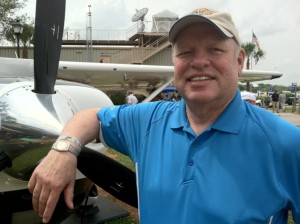
Dave Franson
I used to be a pilot. Oh, I still hold a certificate that says I’m licensed to fly an Airplane, Single-Engine, Land (ASEL), but I haven’t done so in over a decade. As it turns out, not alone. Far from it. The latest figures indicate that we’re losing approximately 6,000 pilots per year in the U.S.
In my case, the FAA is probably glad I’m among them. When I was still flying, the controllers in the tower at Wichita Mid-Continent Airport recognized my voice…or maybe it was my erratic style. They used to practice evacuation drills when I entered the pattern. I discovered they had a term for my landings: “Dribbling.” When they heard I was considering paying my flight instructor to give me a biennial flight review and sign me off to get back into the air, they took up a collection and paid him not to. When I asked him what he thought about an instrument rating, he recommended I consider the clarinet.
But, the economics of being a recreational pilot have become almost prohibitive, anyway…and that’s a concern, because it also means learning to fly and owning a personal airplane is harder to justify, too. The average price of a general aviation aircraft nearly doubled from 2007 to 2010. Buying a new Cessna 172 will cost more than $300,000 and a new diesel 182 starts at $515,000.
The Aircraft Owners and Pilots Association (AOPA) and the Experimental Aircraft Association (EAA) have endorsed programs to ease the medical requirements for private pilots, substituting a valid driver’s license in certain circumstances. AOPA has also recently issued guidelines on how to form a flying club and acquire a used airplane, with the intent of expanding the opportunities for dormant pilots like myself.
The publisher of Av-Web, an industry on-line news service, launched an initiative to Rebuild, Restore, and Re-equip the GA fleet, updating restorable aluminum aircraft to modern capability at a price that is affordable. In more recent days, he’s also created a program to challenge current pilots and aircraft owners to issue an “Invitation to Fly” to their friends, neighbors, lapsed pilots and youngsters who haven’t paid attention to private aviation in recent years.
Back in 2013, the Small Airplane Revitalization Bill was introduced by then-Congressman Mike Pompeo. President Obama signed it into law. It was designed to streamline the certification process and increase safety for production aircraft, potentially eliminating some of the costs associated with the introduction of new models. Savings were to be passed onto the consumers. Unfortunately, the market for the affected models—personally flown, primarily single engine airplanes—remained basically flat and any stimulation that might have been generated by a less cumbersome regulatory process was virtually neutralized by a lack of market enthusiasm.
Locally, GlobalParts.aero tried to boost interest with a very interesting approach: they acquired the Type Certificate, intellectual property, tooling, and assets of the Meyers Aircraft Model 200. They offered their up-to-date servicing and support network for operators of the high performance single engine model which was originally certified in the 1960s. Though it was designed half a century ago, the Meyers 200’s performance, economy and versatility are still competitive in today’s market, too. But, GlobalParts.aero hasn’t been able to generate much enthusiasm, either and is now assessing ways it might utilize its innovative capabilities to expand the potential of this iconic, affordable, owner flown airplane.
Yingling Aviation also took a creative approach. They acquired some 25-30 year old Cessna 172N Skyhawk airframes and completely refurbished and updated the airplanes so that they were virtually identical to the production model 172s rolling off the Cessna/Textron line in Independence. The Ascend 172 from Yingling is a masterfully reconditioned aircraft that is a viable alternative for flight schools, flying clubs and individuals who don’t have or want to spend close to half a million dollars for a four-place, 120 mile per hour single engine airplane. But, even though it’s priced at about half the cost of its current production offspring, the Ascend 172 hasn’t revitalized the market, either.
All of the recent efforts to re-invigorate the lower end of the GA marketplace are laudable and deserve some consideration. But, none of them have come up with a way for the manufacturers to make money on personal airplanes. Cirrus and Piper have supplanted Cessna and Beech as the major producers of single engine piston aircraft, but even they can’t keep the cost of their products at a level that’s compatible with a middle class income. Simulators are taking a greater percentage of the training workload and older—and increasingly outdated—airplanes are being flown until they are forcibly retired by a lack of parts to keep them in the air. With the coming of the Next-Gen Air Traffic Control system and its requirements for ADS-B and digital navigation and communications capabilities, many of the legacy airplanes that are the staples of flight schools and flying clubs will also be grounded. In the not-too-distant future it’s likely 100LL burning aircraft will be grounded by regulations which restrict the use and availability of leaded fuel, too.
So, what’s the answer? There’s probably a market out there for reconditioned, like-new training, flying club and personally owned airplanes, but it’s nothing like the one that existed in the days before the threat of unrestrained product liability litigation nearly killed it. Even the General Aviation Revitalization Act of 1996 wasn’t enough to restore
what had once been the industry’s most prolific segment. Perhaps the answer lies in a joint effort among airframe manufacturers, home builders, and the government to create an environment—and aircraft—that can be used by prospective students who are inspired and excited about replacing the current generation of pilots who are retiring. It will take cooperation and some serious promotional efforts to convince the next generation to put down their devices long enough to consider taking the controls of an aircraft.
We’ll also have to persuade these prospective aviators that they won’t be losing their jobs to robots and pilotless “Air Ubers.” Finally, as an industry, we have to agree to take a more serious and unified approach to preserving the aircraft, equipment, techniques and support structure that already exists. It’s worth it to keep many of our smaller local airports from becoming “bone yards” and both personal flying and “hangar flying” from becoming lost art forms. General aviation and its heritage are too valuable to lose. We must work together to keep it going. You might say it’s the “Wright thing” to do!
August 28, 2018
Ms. Hochstetler was home-schooled from kindergarten through the twelfth grade in her hometown of Leesburg, Indiana. She graduated in 2016. She was presented with a check for $5,000 on the evening of August 23 at a Wichita Aero Club-hosted event at Stearman Field in Benton, KS. A licensed pilot, she has obtained her Instrument rating and is currently working on her Commercial and CFI ratings. She’s also a nationally certified Emergency Medical Technician (EMT) who is employed by Hesston Fire and Emergency Medical Services. She also finds time to serve as a Student Ambassador for Hesston College.
“I can’t express how much this scholarship means to me,” Ms. Hochstetler said.
“It’s such an honor and it will be a significant help to me in the pursuit of my passion to fly. I look forward to a career as a pilot.
“I also want to say ‘thank you’ to all those who have made this scholarship possible. I look forward to the day when I can contribute in a similar way. I’m especially interested in being a part of the Wichita Aero Club’s support of STEM programs. Perhaps I’ll have a chance to join their effort to encourage students at all levels—especially young women,” she added.
The WAC scholarship honors the memory of Ed Stimpson, the late President of the General Aviation Manufacturers Association and ICAO Ambassador. It has been awarded annually to a student who seek to make a significant contribution to the aviation industry upon completion of his or her education.
“It’s always gratifying to award one of our scholarships to a dynamic and enthusiastic recipient like Gracie, “ explained John O’Leary, chairman of the Wichita Aero Club Board of Directors. “Her outstanding performance in school and her obvious commitment to serving others made her selection an easy one.
“The goal of our educational initiatives is specifically to stimulate interest in and support of aviation-related curricula at learning institutions and to provide some help in defraying a portion of the recipients’ expense. We’re glad we’re able to have a tangible way to encourage students to pursue careers in aviation and become the next generation of industry leaders. We’re also looking at additional ways we can expand the scope of our efforts and the ways we underwrite them. Our scholarships are currently funded through two principal fund-raising events— our annual golf tournament and Wichita Aero Club Trophy Gala.”
The Wichita Aero Club was established in 2008 to foster and promote interest in aviation, provide a forum focused on the industry’s issues and achievements and bring together those with a passion for flight in an environment that expands and enhances professional relationships and furthers cooperation and understanding.
For more information on the Wichita Aero Club, the Ed Stimpson Scholarship or events, visit the WAC website at www.wichitaaeroclub.org.
June 25, 2018
Mid-Continent Instruments and Avionics is honoring the memory of Pat Napolitano – pilot, A&P Mechanic and friend, by funding the establishment of The Pat Napolitano Memorial Scholarship for Aspiring Technicians. Through this scholarship, Pat’s legacy will inspire a new generation of aviators.
Pat Napolitano, Fleet Support Representative and Staggerwing Pilot for Mid-Continent Instruments and Avionics, passed away in an airplane accident May 25, 2018. Having been with the company for more than 15 years, Napolitano was a respected employee and member of the aviation community. With more than 30 years of experience and over 4,500 hours of flight time, his passion for aircraft maintenance and flying was apparent to anyone who had the opportunity to meet him.
“I am personally saddened to lose a close friend and colleague,” said Todd Winter, President and CEO of Mid-Continent Instruments and Avionics. “Pat’s love for aviation was contagious. He was a passionate and caring person; an impressive pilot and technical expert. He helped make flying fun. We will miss him greatly and remember him every time we fly.”
The Pat Napolitano Memorial Scholarship for Aspiring Technicians is available to all graduating seniors or current college students pursuing their Aviation Technician Certification.
Mid-Continent Instruments and Avionics has partnered with the Aircraft Electronics Association (AEA) Educational Foundation to administer the scholarship program.
Donations to the Pat Napolitano Memorial Scholarship can be made to:
AEA Educational Foundation
c/o Pat Napolitano Memorial Scholarship
3570 NE Ralph Powell Rd.
Lee’s Summit, MO 64064
For more information about the scholarship, contact Julie Lowrance, Director of Communications for Mid-Continent Instruments and Avionics, at 316.630.0101.
May 8, 2018
Wichita Public Schools on Monday proposed a new high school aviation curriculum, with the goal of getting students ready to work in the aviation industry immediately after graduation.
The specialized curriculum, called Aviation Pathway, will be the first high school program of its kind in the state if approved by the Kansas State Department of Education.
“This is long overdue,” said Randy Watson, Kansas’ education commissioner. “Finally in the Air Capital city, we have a pathway that helps every student that wants to help lead the world in aviation stay right here at home and do that.”
The district is partnering with Textron Aviation and WSU Tech on the project. The partners said the program is needed due to a retiring workforce and a low unemployment rate. Growth in the manufacturing sector and fewer students choosing manufacturing careers are other factors.
“The engineering that I do on a daily basis is complicated stuff and we need people that know their stuff to be able to put that together and get it out the door,” said Ben Blankley, an engineer at Spirit and a member of Wichita’s Board of Education.
High school graduates can already apply for starting jobs in the aviation industry without taking a specialized curriculum, but Blankley said most students would need at least some technical college training without Aviation Pathway.
Jim Walters, senior vice president of human resources at Textron Aviation, said the new curriculum and the possible credential students could earn would give them an advantage when applying.
“It’s a leg up, frankly, on the rest of the labor force,” Walters said.
Under the proposal, students would take classes at their high school and at WSU Tech’s National Center for Aviation Training. There’s also the possibility of senior year internships or shadowing opportunities. The program would have two different paths: aviation production and aviation maintenance.
A curriculum is expected to be finalized over the summer and will need approval from the Kansas State Board of Education. If approved, the program will launch at North, Northwest, Southeast and West High School in the fall. The curriculum would be fully implemented fall 2019 and available for other districts.
—
This article was written by Stephan Bisaha for KMUW. Bisaha, based at KMUW in Wichita, is an education reporter for the Kansas News Service, a collaboration of KMUW, Kansas Public Radio, KCUR and High Plains Public Radio covering health, education and politics. Follow him on Twitter @SteveBisaha.
January 9, 2018
I will never forget the first time I turned the runway lights all the way up.
I sat in my tall chair up in the ATC tower and cranked those puppies to the max. I felt my eyes grow wide as the lights suddenly transformed from dim dots along a stretch of concrete into truly radiant signals against a black sky. That vibrant runway was beckoning to something far above. “Come on in. We’re ready for you.” I imagined a pilot coming in for landing, spotting my lights from miles away and feeling at ease because he knew exactly where to go. There was something magical about that – me being on the ground and the pilot being all the way up there. At the wee age of 9, I knew there was something special about aviation.
My dad had the coolest job in the whole world.
He was an air traffic controller at what was previously Mid-Continent Airport. My sister and I would fight over whose turn it was to go with him on a mid-shift. I was older, so I won that fight more often than she did. I had very important responsibilities on my shifts. You know, like clicking the clicker all the way up to 9999 while pretending to count how many planes flew in and out that night. Or writing ridiculously important notes on thin, flimsy strips of paper and sending them down the vacuum air tube into what I assumed was a super secret office where my intelligence would be translated and then immediately acted upon. I had my own headset; I listened intently to my dad talk to the pilots (very, very, very quickly) in a language I was convinced was not English.
September 11, 2001 changed all that of course, but my memories had already been set in stone.
Back then, to me, aviation (in its entirety) was ATC. And so aviation was absolutely fantastic. Walking up the narrow stairs to the tower to see my dad made me the most important girl in the world. And every time he took us into the TRACON and let us stand behind the controllers hard at work (after our eyes adjusted, that is), I was in complete awe of how everything worked together like fine-tuned gears to get airplanes up in the air and back down again without allowing a colossal disaster to take place.
As time would have it, though, I grew up and learned just how much more there was to aviation. Surprisingly, I don’t work directly in the industry. But everything about it still has that same magic. Selfishly, I wish my dad hadn’t retired so he could give my kids the inside scoop I was lucky enough to experience. And each time we’re in an airport, I point out all the things that I have so much appreciation for because of those experiences. Like how each tower looks a little different. Or how the ground crew uses signals to talk to the pilot. How every time we get off the plane a maintenance crew checks out all the parts (many of which were probably made right where we live!) to make sure it’s safe for the next group of people to fly. How certain airplanes are made for certain things (passengers vs packages). Or that I’m still not actually sure how our luggage ever successfully gets where it’s supposed to go.
Can I be honest with you?
I don’t have my pilot’s license, but as a grown woman I still stick my head out the window to watch a plane when it flies directly overhead. Proof of that eyes-turned-skyward spirit of aviation, I guess…
I gawk at a plane landing sideways on a windy day.
I make my husband pull the car over on a road trip to watch the T-birds practice in nearby airspace. Funny, though, I always seem to get something in my eye when they float in that flawless formation…
Number 4 on my bucket list is to attend NBAA.
When I was little I got a unique glimpse of the industry from the inside, and grew up in the Air Capital an aviation outsider. Maybe I missed a calling. Or maybe I was always supposed to admire instead of contribute. There’s a little bit of aviation in my blood, though, that much I’m sure of.
I genuinely hope it’s the same for everyone who grows up here, and that we find a way to pass it on, even from the outside.
—
Written by Kristin Wemmer
October 9, 2017

by Nate Franson
Held at the Hereford House in Andover, KS, the breakfast was sponsored by GlobalParts.aero and was the opening session of their annual day-long employee retreat. Attending at the invitation of the Aero Club, members of the Cessna 190/195 Owners Association who had flown more than 40 of the vintage Cessna single engine airplanes to nearby Stearman Field for their annual Fly-In, joined Aero Club members and GlobalParts employees for a breakfast buffet, meet-and-greet, and a brief update and welcome message by Aero Club President Dave Franson before being treated to Connie Podesta’s monologue on the importance of recognizing and effectively leveraging differences in personality and preference when it comes to successfully getting along.
After teasing a 300-slide PowerPoint marathon, Podesta pivoted into her actual presentation, wherein she encouraged attendees to draw four shapes in the air – square, circle, triangle, and “squiggle” – before choosing the one with which they most identify. She then prompted each “shape-group” to stand and be recognized in turn, while offering humorous insight into basic personality traits that each group typically exhibits.
It’s impossible to do justice to Ms. Podesta’s witty repartee during this very active, audience participation segment of her engaging, hour-long opening segment but she basically stated that: Squares tended to be “square”, rigid, organized and straightforward. Triangles were likewise typically straightforward, driven and tending toward perfectionism. Circles were the gregarious pleasers, talkative types, while squiggles were the more wild, creative and authority-bucking mavericks. Or, at least, that’s the way Connie described them—and as it turned out, she seemed to possess an uncanny seventh sense that made it tough to argue with her!
The main thrust of such an exercise was to open up dialogue about how different personalities relate to one another and to inspire more effective collaboration between potentially disparate points of view. While such a presentation may eschew the familiar industry-focused discussion of most Aero Club speakers, it served as a welcome and important reminder that regardless of our roles and responsibilities in the aviation community, as professionals we must always seek to understand and overcome our potential differences with colleagues, collaborators, and clients. Fortunately, Podesta was able to do this all in humorous fashion and made for a highly entertaining event. (As an aside, I couldn’t help but think how her well-supported characterizations of the various types would make for an extremely interesting Cockpit Resource Management session at the next Safety Standdown…especially when you add in her dry humorous descriptions.)
The vintage Cessna 190/195 flyers and their families and friends who made the trip to Wichita for the weekend helped balloon the crowd for the Aero Club/ GlobalParts.aero Employee Retreat Breakfast to nearly 180 people. While the GlobalParts team stayed around for more of Connie Podesta’s wise counsel, the Fly-in visitors and some of their Aero Club hosts returned to Stearman Field in Benton where the array of 60+ year old shiny Cessna single engine airplanes lined the runway for nearly half of its length. The full cantilever wing, conventional gear, radial engine aircraft were built in Wichita by Cessna from 1947 until 1954 and served as “Businessliners” and in the U.S. Air Force, the U.S. Army and the Army National Guard. Several of the visitors sported military paint schemes and designations. (See pix).
The November Aero Club luncheon is currently being finalized, with details to be announced at a later date. The next scheduled event is the annual On-Air Summit, December 12, at 11:30 AM.

